The U.S. Department of Interior’s Bureau of Land Management (BLM) has moved three solar power projects forward after completing environmental review processes. The solar total for the three projects is 965 MWac, roughly 1.20 GWdc, and 100 MW/400 MWh of energy storage.
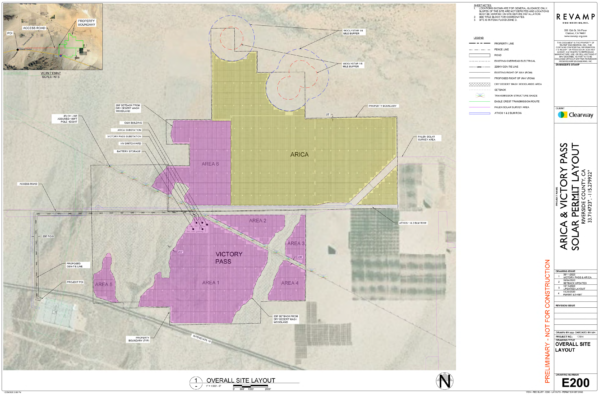
For the 200 MWac Victory Pass Project and the adjacent 265 MWac Arica Solar Project, the BLM has opened its comment period and uploaded a collection of documents analyzing the potential impacts of the facilities. The 500 MWac Oberon Solar facility is expected to have documents uploaded and available for comment in the near future.
The Victory facility signed 15 year power purchase agreements (PPAs) with two California Community Choice Aggregators: Silicon Valley Clean Energy Authority and Central Coast Community Energy. The Arica project signed its own collection of PPAs, one of which is a 15-year contract with the Clean Power Alliance for 93.5 MWac of solar plus 71 MW of storage.
Victory facility’s PPA implies that there will be four hours of 100 MW battery capacity between the two adjacent sites.
The three projects were identified as suitable for development within the BLM’s 10.8 million acre share of the Desert Energy Conservation Plan issued by the State of California, the BLM, and other stakeholders. The plan seeks to balance the environment and development within the 22.5 million acre southeast California desert ecosystem.
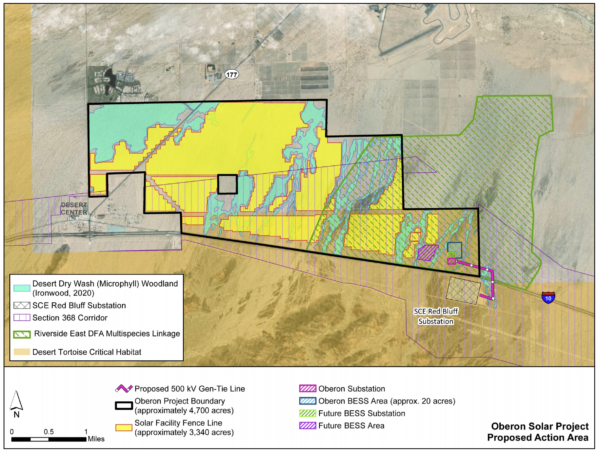
Most of the documentation uploaded for BLM analysis is environmentally focused.
After refining the layout to avoid much of the desert dry wash woodland and sensitive plant species, the Ariva and Victory Pass fence lines were drawn to contain 2,665 acres of solar + storage, and an additional 50 acres for power lines, switchgear, and roads.
The plants would be wired to the power grid via a 3.2-mile shared overhead 230 kV transmission line that interconnects with the grid via the Southern California Edison Red Bluff Substation.

The documentation notes that during operation and maintenance periods, water would be required for panel washing, maintenance, and cleaning the substation restroom facilities. Both facilities are projected to require 15 to 25 acre-feet of water per year. An acre foot of water is 325,851 gallons; about enough to cover a football field with a foot of water.
The facilities are located in an area with multiple other solar facilities, including the Palen Solar Power Plant, Athos Power Plant facilities, Desert Harvest I & II, and the Desert Sunlight facility.
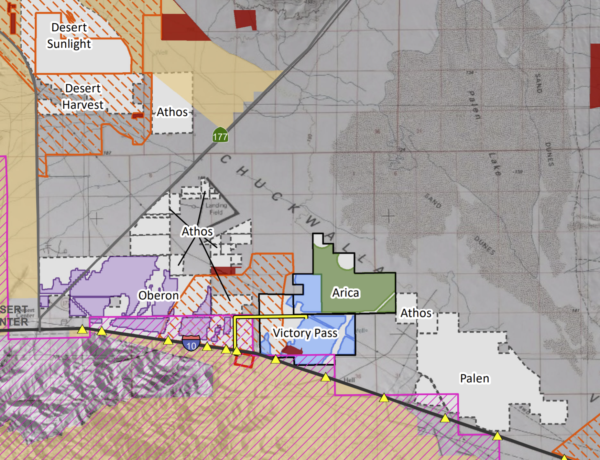
These latest solar facilities are located between two highways, California 177 and I-10. From an environmental and logistical perspective, this is an important variable in the project as evidenced by the 70-page transportation analysis in the Arica/Victory documentation.
Truck deliveries that are expected during the peak construction period of months six through 10, will total nearly 65 per week. During construction, the site will average 468 work commutes to the sites, with a maximum of 1,016 workers commuting during peak construction.
The Joshua Tree National Park is around six miles north of the Arica/Victory facilities. Joshua Tree has some of the darkest nights in Southern California and was designated an International Dark Sky Park.
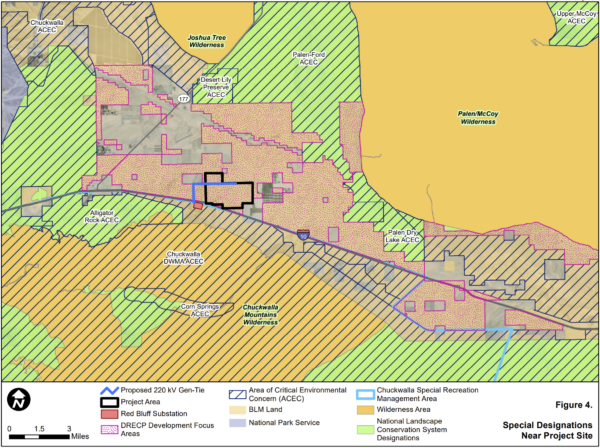
Other areas near the facility include the Palen-Forn Playa Dunes, Chuckwalla, the Palen Dry Lake, Corn Springs, Alligator Rock, and the Desert Lily Preserve.
These “Areas of Critical Environmental Concern” start 300 feet south of the site for the Chuckwalla’s 514,000 acres of land, through the Desert Lily Preserve area 2.25 miles north of the facilities.
Recently, an 850 MWac solar power facility was withdrawn from BLM consideration in Nevada after local pushback and development considerations.
This content is protected by copyright and may not be reused. If you want to cooperate with us and would like to reuse some of our content, please contact: editors@pv-magazine.com.
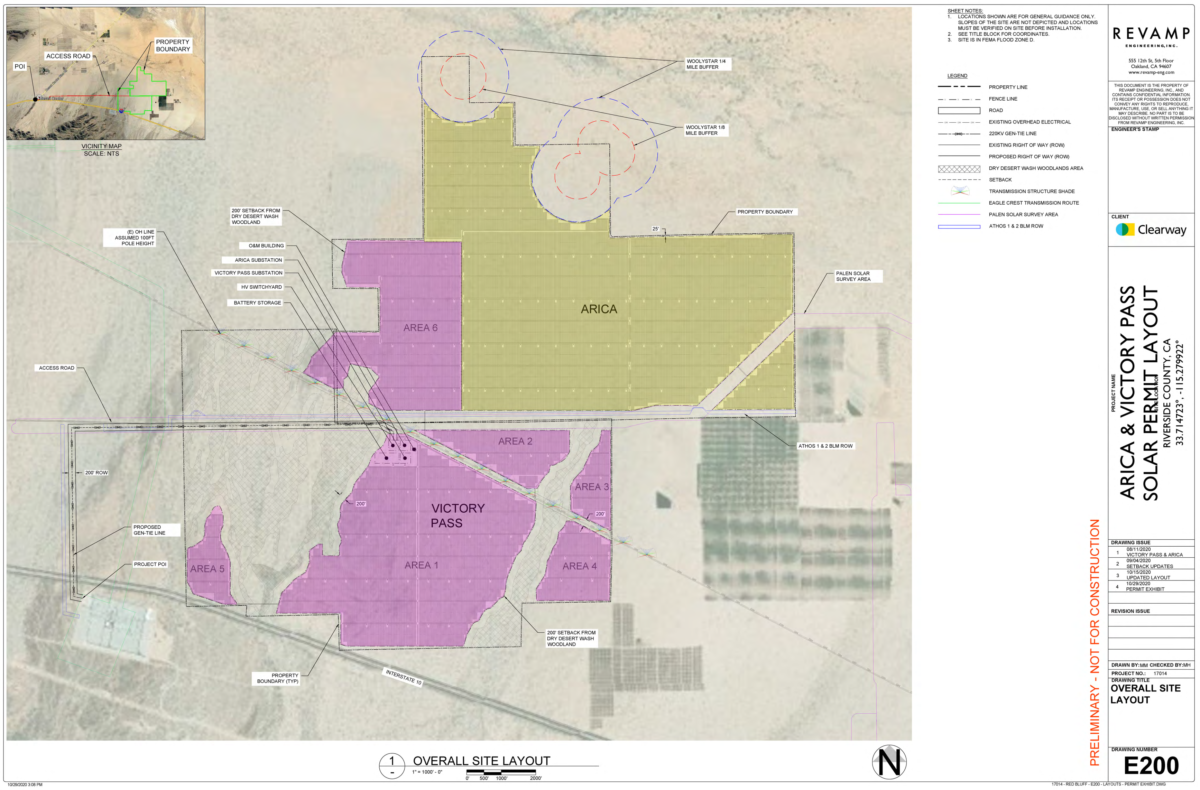








By submitting this form you agree to pv magazine using your data for the purposes of publishing your comment.
Your personal data will only be disclosed or otherwise transmitted to third parties for the purposes of spam filtering or if this is necessary for technical maintenance of the website. Any other transfer to third parties will not take place unless this is justified on the basis of applicable data protection regulations or if pv magazine is legally obliged to do so.
You may revoke this consent at any time with effect for the future, in which case your personal data will be deleted immediately. Otherwise, your data will be deleted if pv magazine has processed your request or the purpose of data storage is fulfilled.
Further information on data privacy can be found in our Data Protection Policy.